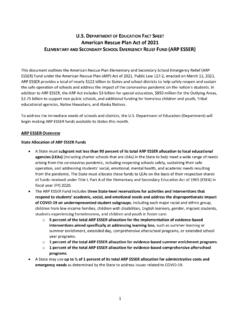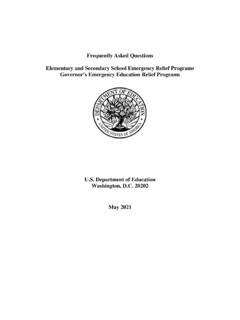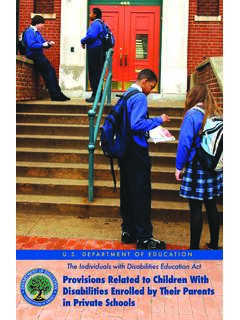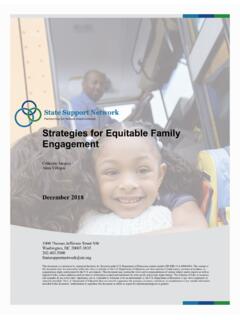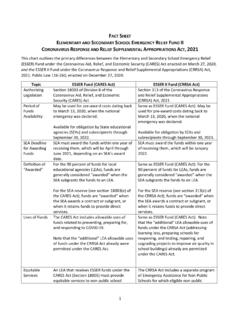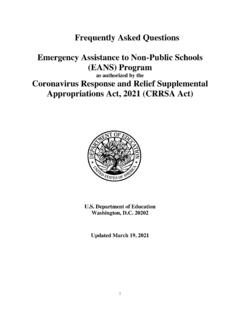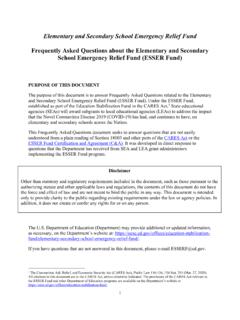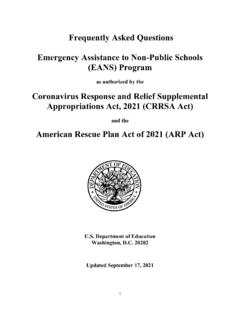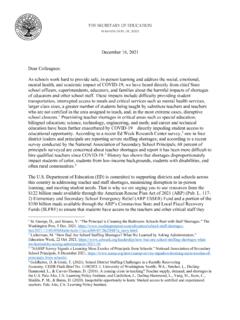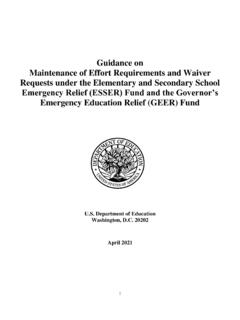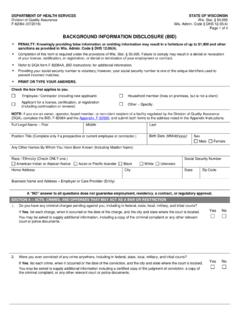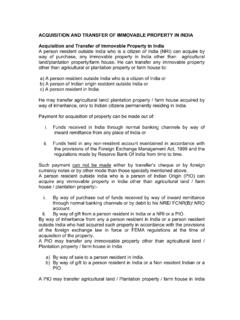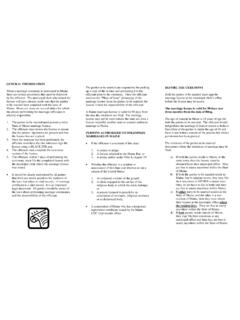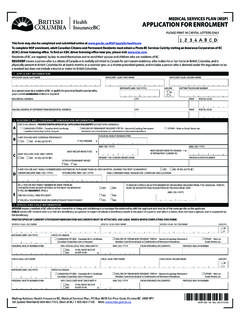Transcription of PROVIDING EQUITABLE SERVICES TO STUDENTS AND …
1 PROVIDING EQUITABLE SERVICES TO. STUDENTS AND TEACHERS IN NON-PUBLIC SCHOOLS. UNDER THE CARES ACT PROGRAMS. Department of Education Washington, 20202. Revised October 9, 2020. Purpose of this Document The purpose of this document is to provide information about EQUITABLE SERVICES for STUDENTS and teachers in non-public schools under the Coronavirus Aid, Relief, and Economic Security Act (CARES Act), Pub. L. No. 116-136, 134 Stat. 281 (Mar. 27, 2020). The CARES Act authorized the Education Stabilization Fund (ESF), which is a new appropriation of $ billion that creates funding streams for several distinct education programs that address the impact of Coronavirus Disease 2019 (COVID-19) on educational SERVICES across the Nation. Under these programs, the Department of Education (Department) will make awards to Governors, State educational agencies (SEAs), and institutions of higher education (IHEs) to help States to prevent, prepare for, and respond to the devastating effects of COVID-19.
2 The provisions of the CARES Act relevant to the ESF and other Department programs are available on the Department's website at Two programs in the ESF require a local educational agency (LEA) that receives funds to provide EQUITABLE SERVICES to STUDENTS and teachers in non-public schools: The Governor's Emergency Education Relief Fund (GEER Fund) totaling $2,953,230,000 (Section 18002 of the CARES Act.). The Elementary and Secondary School Emergency Relief Fund (ESSER Fund). totaling $13,229,265,000 (Section 18003 of the CARES Act.). The Department first issued guidance on April 30, 2020. Subsequently, on July 1, 2020, the Department published an interim final rule (IFR) (85 FR 39479) to implement key requirements governing EQUITABLE SERVICES . The IFR was challenged in four district courts: Washington v. DeVos, No. 2:20-cv-1119-BJR, 2020 WL 5079038 ( Wash. Aug. 21, 2020) (granting preliminary injunction against the Department); Michigan v.
3 DeVos, No. 3:20-cv-4478-JD, 2020 WL 5074397 ( Cal. Aug. 26, 2020) (granting preliminary injunction against the Department); NAACP v. DeVos, No. 20-cv-1996 (DLF), 2020 WL 5291406 (D. Sept. 4, 2020) (vacating the IFR); and Council of Parent Attorneys & Advocates, Inc. v. DeVos, No. 1:20-cv-2310-GLR (D. Md.). The three courts that issued decisions concluded that an LEA must determine the proportional share available to provide EQUITABLE SERVICES to non-public school STUDENTS and teachers in accordance with section 1117(a)(4)(A) of the Elementary and Secondary Education Act of 1965 (ESEA). This document revises the April 30 guidance to align with the courts'. decisions. Other than statutory and regulatory requirements included in this document, such as those pursuant to the CARES Act and other applicable laws and regulations, the contents of the Department's guidance do not have the force and effect of law and are not meant to bind the public in any way.
4 This document is intended only to provide clarity to the public regarding existing requirements under the law or agency policies. In addition, it does not create or confer any rights for or on any person. The Department will provide additional or updated information as necessary on the Department's COVID-19 webpage: If you have questions that are not answered in this document, please e-mail ii Table of Contents 1. Does the requirement to provide EQUITABLE SERVICES to STUDENTS and teachers in non- public schools apply to any programs under the CARES Act? ..1. 2. What is a non-public school under the CARES Act programs? ..1. 3. Is a for-profit non-public school eligible to receive EQUITABLE SERVICES for its STUDENTS and teachers under the CARES Act programs? ..1. 4. Which LEA is responsible for PROVIDING EQUITABLE SERVICES to non-public school STUDENTS and teachers under the CARES Act programs?
5 1. 5. Must an LEA or another public agency maintain control of CARES Act funds used to provide EQUITABLE SERVICES ? ..2. 6. Who is responsible for initiating the consultation process and how should it begin? ..2. 7. How does an LEA that receives funds under the CARES Act programs provide EQUITABLE SERVICES in the same manner as provided under section 1117 of the ESEA ? .3. 8. Must an LEA offer to provide EQUITABLE SERVICES under the CARES Act programs to STUDENTS and teachers in all non-public schools located in the LEA, even if a non-public school has not previously participated in EQUITABLE SERVICES under Title I, Part A or Title VIII of the ESEA? ..5. 9. Are all STUDENTS and teachers in a non-public school eligible to receive EQUITABLE SERVICES under the CARES Act programs? ..5. 10. How does an LEA determine the proportional share of funds that must be reserved to provide EQUITABLE SERVICES to non-public school STUDENTS and teachers under the CARES.
6 Act programs? ..5. A. What is the base amount on which the proportional share is determined? ..5. B. What data does an LEA use to determine the proportional share?..6. C. How does an LEA calculate the proportional share? ..6. 11. After an LEA has determined the proportional share of funds for EQUITABLE SERVICES under each CARES Act program, how does it then determine the amount of funds available for SERVICES to STUDENTS and teachers in individual non-public schools? ..6. 12. Do the requirements in 34 apply to EQUITABLE SERVICES under the CARES Act programs? ..7. 13. Is a non-public school whose STUDENTS and teachers receive EQUITABLE SERVICES under the CARES Act programs a recipient of Federal financial assistance ? ..7. 14. What SERVICES and benefits under the CARES Act programs are available to non- public school STUDENTS and teachers?..7. iii PROVIDING EQUITABLE SERVICES to STUDENTS and Teachers in Non-Public Schools under the CARES Act Programs 1.
7 Does the requirement to provide EQUITABLE SERVICES to STUDENTS and teachers in non- public schools apply to any programs under the CARES Act? Yes. The CARES Act establishes two new funds to which EQUITABLE SERVICES requirements apply. Specifically, a local educational agency (LEA) that receives funds under either the Governor's Emergency Education Relief Fund (GEER Fund) (section 18002 of the CARES Act) or the Elementary and Secondary School Emergency Relief Fund (ESSER. Fund) (section 18003 of the CARES Act) ( CARES Act programs for purposes of this document) must provide EQUITABLE SERVICES to STUDENTS and teachers in non-public schools in the same manner as provided under section 1117 of the Elementary and Secondary Education Act of 1965 (ESEA). (Section 18005(a) of the CARES Act.). An institution of higher education or education-related entity that receives funds under the GEER Fund is not required to provide EQUITABLE SERVICES to STUDENTS and teachers in non- public schools.
8 2. What is a non-public school under the CARES Act programs? A non-public school means a non-public elementary or secondary school that (A) is accredited, licensed, or otherwise operates in accordance with State law; and (B) was in existence prior to the date of the qualifying emergency for the CARES Act programs. (Section 18007(6) of the CARES Act.) For purposes of this definition, the date of the qualifying emergency is March 13, 2020. 3. Is a for-profit non-public school eligible to receive EQUITABLE SERVICES for its STUDENTS and teachers under the CARES Act programs? No. A for-profit non-public school is not eligible to receive EQUITABLE SERVICES for its STUDENTS and teachers under the CARES Act programs. Section 18007(6) of the CARES. Act defines a non-public school as a non-public elementary or secondary school. Section 18007(8) of the CARES Act incorporates the definitions in ESEA section 8101 for any terms not defined in the CARES Act.
9 ESEA section 8101(19) and (45) defines elementary school and secondary school, respectively, and specifies that they must be non-profit. 4. Which LEA is responsible for PROVIDING EQUITABLE SERVICES to non-public school STUDENTS and teachers under the CARES Act programs? The Department has determined that, under the CARES Act programs, the LEA in which a non-public school is located is responsible for PROVIDING EQUITABLE SERVICES to STUDENTS and teachers in the school, as it is under most ESEA programs that require an LEA to provide EQUITABLE SERVICES . Outside of Title I, Part A, the responsibility typically falls on the LEA. in which a non-public school is located because EQUITABLE SERVICES are generally available 1. to all STUDENTS or teachers in the non-public school in the LEA and the LEA in which the school is located is closest and best able to meet the needs of STUDENTS and teachers.
10 Title I, Part A of the ESEA is different; ESEA section 1117 sets forth a student residency requirement, rather than a school location requirement, for receipt of EQUITABLE SERVICES under Title I, Part A. Only low-achieving STUDENTS who live in a participating Title I public school attendance area are eligible for SERVICES and, therefore, the LEA where STUDENTS reside is responsible for PROVIDING EQUITABLE SERVICES . The CARES Act programs have no such residency requirement for eligibility for SERVICES . Rather, the CARES Act programs provide LEAs full discretion, unless funds are targeted for a specific purpose or population of public and non-public school STUDENTS by the Governor under the GEER Fund or by an SEA through the SEA reserve under the ESSER Fund (see section 18003(e) of the CARES. Act), to use CARES Act funds to provide educational SERVICES to STUDENTS in public and non-public schools in the LEA through a broad range of allowable activities.
